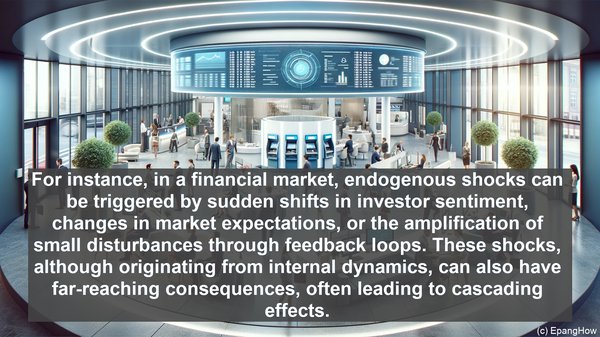Introduction: The World of Economic Shocks
Hello, everyone! Welcome to another insightful article. Today, we’re going to explore the intriguing realm of economic shocks. These unexpected events can have profound effects on various economic systems, often leading to significant changes. Two primary types of shocks, exogenous and endogenous, stand out for their distinct characteristics. Let’s dive in!
Exogenous Shocks: External Forces at Play
Exogenous shocks, as the name suggests, originate from external factors that are beyond the control of the economic system under consideration. These shocks can take various forms, such as natural disasters, geopolitical events, or sudden changes in global market conditions. What sets exogenous shocks apart is their inherent unpredictability. Since they emerge from external forces, they often catch economic agents off guard, leaving little time for preparedness. As a result, exogenous shocks can have a swift and significant impact on the affected system.
Endogenous Shocks: The Result of Internal Dynamics
In contrast to exogenous shocks, endogenous shocks stem from within the economic system itself. They arise due to the complex interplay of various factors and mechanisms that are inherent to the system. For instance, in a financial market, endogenous shocks can be triggered by sudden shifts in investor sentiment, changes in market expectations, or the amplification of small disturbances through feedback loops. These shocks, although originating from internal dynamics, can also have far-reaching consequences, often leading to cascading effects.

Implications and Responses
The divergent origins of exogenous and endogenous shocks have implications for how they are perceived and managed. Exogenous shocks, being largely uncontrollable, often require adaptive responses. For instance, in the aftermath of a natural disaster, policymakers may focus on immediate relief measures and rebuilding efforts. On the other hand, endogenous shocks, which are influenced by the internal structure of the system, may call for more systemic interventions. In the case of a financial market crash, for example, regulatory measures, liquidity injections, or changes in policy rates can be employed to stabilize the system.

Interplay and Feedback Loops
While exogenous and endogenous shocks are distinct in their origins, it’s important to note that they are not always independent of each other. In fact, there can be intricate interdependencies and feedback loops between the two. For instance, an exogenous shock, such as a sudden surge in oil prices, can trigger a chain of endogenous shocks, affecting sectors like transportation, manufacturing, and consumer spending. Similarly, the cumulative impact of endogenous shocks, such as a prolonged economic downturn, can make an economy more vulnerable to exogenous shocks, amplifying their effects.
